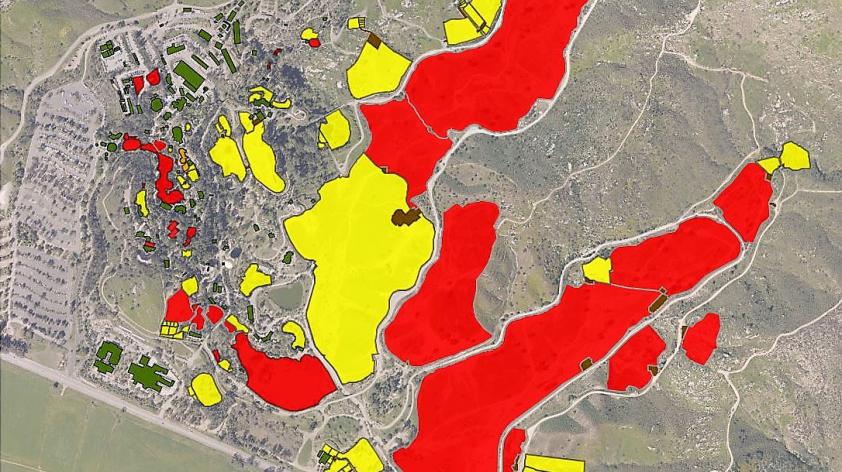
Let’s Map It: The role of GIS mapping in zoo biosecurity
If you have ever been to the San Diego Zoo or Safari Park, you know how wonderful it is to wander the network of trails, boardwalks and bridges, encountering an array of amazing, often endangered animals around every turn. You enter aviaries where colorful birds fly all around you and in the next enclosure watch playful primates jumping from branch to branch. In our effort to inspire a passion for wildlife and create naturalistic habitats in limited space, both zoological parks have become somewhat maze-like, as guests often discover when trying to follow the complicated maps to their favorite animal or nearest restaurant.
Now imagine there is an infectious agent (like a virus) that could be carried into one of these facilities on the wheels of a vehicle, the soles of a guest’s shoes or on an employee’s clothing. Maybe this disease would only affect birds, but its presence still would have serious consequences for such endangered species as California condors, African penguins and others. How could we stop its spread and protect our birds while continuing to care for them on a daily basis and remaining open to the public?
Such is the dilemma posed by the recent identification of Virulent Newcastle Disease (VND) in Los Angeles and San Bernardino. This highly contagious virus is deadly to poultry and many other birds, and if it moves into commercial poultry, into wild birds, or further south, we will have to be ready to implement strict biosecurity protocols. (For more on our already rapid response, check out Dr. Rideout’s blog: http://institute.sandiegozoo.org/science-blog/how-fast-can-we-respond-really-fast.)
Biosecurity (protection from biologic agents) is a daunting task for facilities of our size and complexity.
One of the most powerful (and frankly the coolest!) tools we are using to create a management and response plan is Geographic Information System (GIS) mapping. Once the groundwork is laid in one of these systems (we use ArcGIS by Esri), identifying the location of all the susceptible species (in this case birds) in the Zoo can be visualized with a click of a button. Need to know all the visitor access routes to these birds? It’s just another click away. How about whether there is any water runoff from one area into a bird exhibit? Let’s add the topographic layer!
Using an array of standardized symbols, embedded photographs of specific locations, and detailed labels of enclosures, buildings, walkways, and roads, comprehensive maps and overlays for very specific circumstances can be prepared easily.
For example, besides demonstrating to USDA officials that we can effectively create containment zones for our birds in the event that VND arrives in San Diego, we can also instantly share these maps with first responders in the wake of a natural disaster.
So on your next visit to the zoo, if you feel like you are lost in the maze, just enjoy the scenery – we’ll worry about the details!













